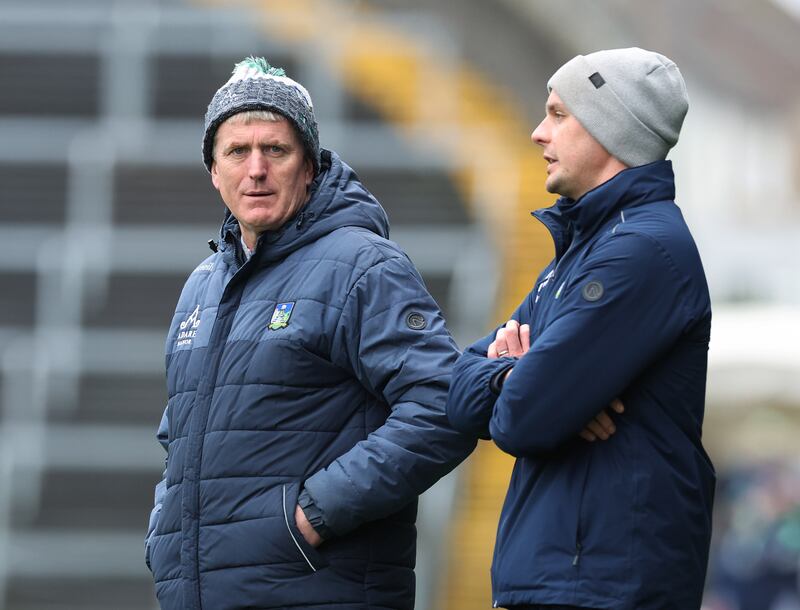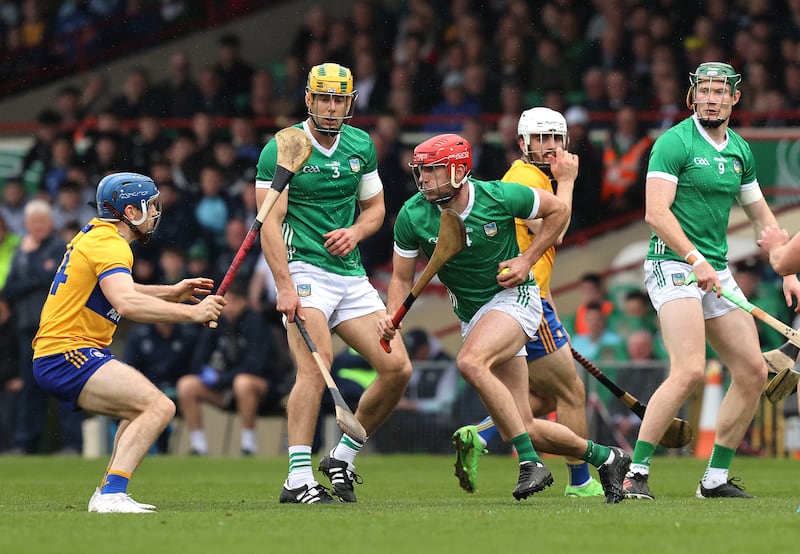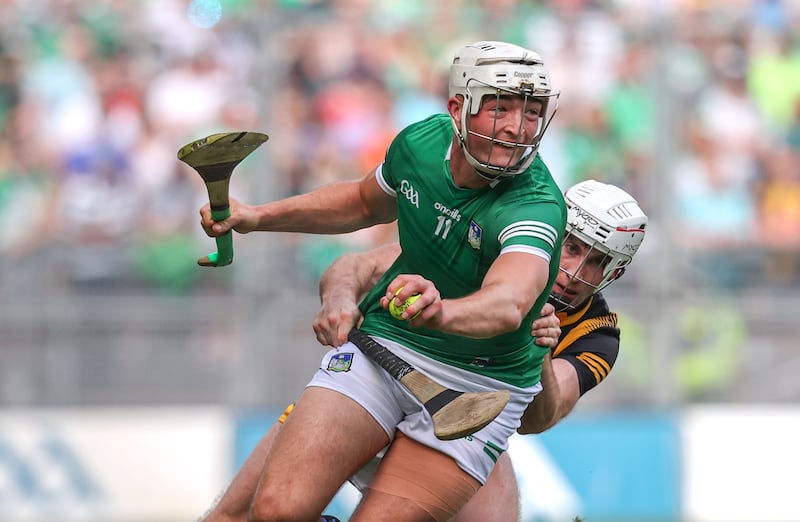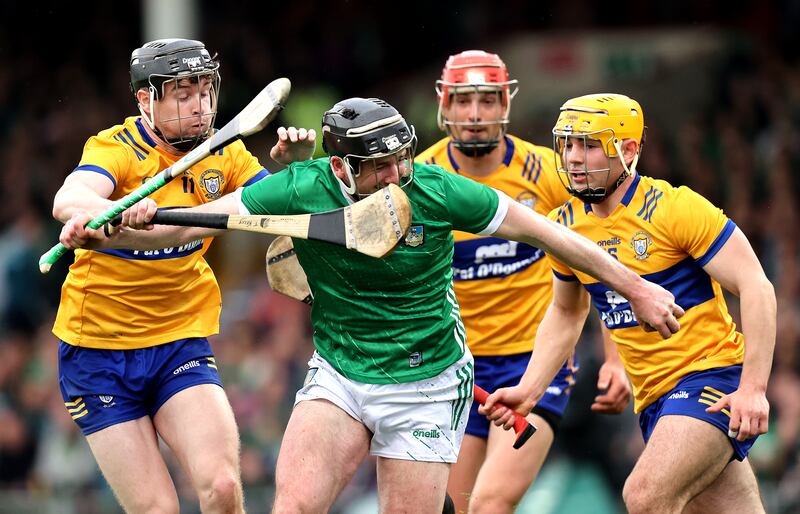Limerick have dominated the bottom line without tricks or gimmicks.
In the act of winning they have repeatedly revealed themselves. Their patterns, their preferences, their triggers, their strengths have all been bared. Anything that was missed by the naked eye was soon mopped up by forensic eyes in every rival camp.
One leading, long-standing analyst described them as the “most predictable team in hurling”. Limerick knew that. Their opponents knew. So what?
Being so consistent in their team selections and in their performance levels also meant that they were quantifiable. A 360 degree image of them could be captured in numbers. Internally, it was how they accounted for themselves, by the numbers. They chased key performance targets and trusted in those thresholds.
“When I talk about process we really chunked it down and we spoke about what was important to a week,” said their performance coach Caroline Currid a few years ago. “What did we want to get out of this week’s training and this week’s game – having the focus on our measurements”
The key word was measurements. The process started and finished there. They were led by the numbers. In that respect, nothing has changed over the years. But if Limerick were such a known quantity, why haven’t their opponents made better use of that knowledge? Why have Limerick lost so few matches?

As things stand, they’re on a one-game losing streak, as part of a two-match dip in form. This might sound like a rude question, but has something changed? Has somebody come up with something? Or it is just them, not being themselves?
Outside lenses are interesting. What did analysts see in Limerick over the years and what are they seeing now? Barry Cleary is the co-founder of GAA Insights, and has worked as an analyst with Clare and Wexford in recent seasons. He has been glued to them too.
“There’s nobody more watched than them,” says Cleary. “Everyone is throwing problems at Limerick the whole time. I’ve looked at the numbers over the years and they tend to be behind in games a lot in quarter one. But after about 15 or 20 minutes, they start to figure you out. You’ve thrown something at them, and they’ve figured it out.”
Paul Kinnerk’s peerless capacity to make really smart in-game adjustments gives Limerick a competitive advantage every time they take the field, but on match days it would be micro-stuff, on a case-by-case basis.
From year to year, though, Limerick couldn’t afford to be blase about the tactical curveballs that others were pitching, and over time that forced macro changes too.
Brian McDonnell is a multi-sports analyst with Stats Perform and author of The Green Monster, a stunning 12,000 word treatise on Limerick’s All-Ireland-winning season in 2018. What he has seen is evolution and sustainable solutions.
“At one stage, an awful lot of distribution was coming from Declan Hannon,” says McDonnell. “Teams were saying, ‘We’ll jump on him when we don’t have the ball’. So, how were Limerick going to get out of defence with the ball? The answer was putting Barry Nash, who is a corner forward by nature, back corner back. They were presented with a problem and they adjusted. But the principles of their game haven’t changed.”

Moving Cian Lynch from centrefield to centre forward – where he would be much harder to tie down – was another key structural change in 2020. In the reshuffle Kyle Hayes went from number 11 to left half back, where he could be a dynamic attacker and a towering presence under the dropping ball.
Lynch and Hayes are pillar players, but what happens when they’re rubbed out? Before he went off injured against Clare, Lynch had been on the ball just six times.
Hayes scored four points from play in last year’s All-Ireland final and was directly involved in nine of Limerick’s scores, a staggering number. Against Clare, though, he failed to have a shot at goal. In David Fitzgerald, Clare had a one-man anti-missile defence.
“Fitzgerald made him defend more than he usually defends,” says Sean Flynn, who was part of Tipperary’s team of analysts for their All-Ireland win in 2019, and writes a terrific analysis column for the Nenagh Guardian.
Limerick depend on their structure and their system, but within that are load-bearing players who make a distinctive difference. Hayes and Lynch are two of them. On a bad day, their influence can’t be outsourced.
One of the planks of Limerick’s game is to work the ball into launch positions, on their terms. The deliveries to their inside line ideally originate between the 65s. One of their performance targets over the years has been to hit their inside forwards with 15 long balls in each half. If that is still the case, those numbers weren’t reached against Waterford or Clare.
“Waterford did something ballsy,” says Cleary. “They pressed up really high and didn’t get sucked in by the ball. If you look at the high-behind-the-goal footage, they basically pushed everyone up on the Limerick lads, bar their two full-backs and a sweeper. Usually Limerick are gone out beyond any kind of press with three or four passes, but there was no breathing space, there was no popping a pass to a runner. It was incredibly brave and it really annoyed Limerick.”

Managing the ball against Limerick, though, is still a huge challenge. Limerick had a man sent off against Waterford, and didn’t play well, and yet Waterford managed just 12 shots from inside the Limerick 45. In Tipperary’s last nine league and championship games against Limerick, according to Flynn, they have averaged just 15 shots from the same zone. Not enough to hurt them.
Everybody is trying to get the ball beyond the Limerick half-back line, but how? Going long isn’t a viable option. In the 2019 Munster final, for example, Tipperary hit 29 long puck-outs against Limerick and failed to recover 20 of them. Others have experienced the same kind of blowback.
“But if you try to play the ball out short,” says Cleary, “there’s no better tacklers than their front six. The numbers are crazy for what they do.”
In the last match, Flynn reckons that Colm Lyons’s permissive refereeing of fast puck-outs enabled Clare to spring Limerick’s trap. When Limerick have time to set up on restarts it is incredibly hard for a goalie to find a viable receiver, other than in his full-back line.
Clare, though, were able to feed players around their own 45 who could hit their inside line directly. From that platform they managed 22 shots from inside the Limerick 45.
“When I go to Limerick matches I try as much as possible to look away from the ball and see how they’re setting up,” says McDonnell. “They are absolutely brilliant at being organised before the ball gets there.”
To a degree, Clare disarmed that. More fundamentally, they have the power and energy and aggression to engage Limerick fiercely and not recoil from the fight. Not every team has those human resources.
Are teams getting closer to Limerick? Cleary points out that seven of Limerick’s last eight matches in the championship have been one-score games, including a draw and a defeat; in their previous 10 championship matches their average winning margin had been nearly nine points.
Ever since Cork were eviscerated in the 2021 All-Ireland final, says Cleary, teams have been “plugging their 45 to stop goals against them. Limerick created only one goal chance in the first three league games this year. When you force a team to beat you with shots from long range there will be a day when it doesn’t work”.

There have been occasions when their big players carried them, regardless of strategies or structures. Tom Morrissey has been immense in recent weeks. Players such as Aaron Gillane and Gearóid Hegarty have often played that role in the past, but not just now. The story that Hegarty had quit the panel was a bottle of smoke but his dull run of form is undeniable.
“What would worry me if I was a Limerick person is the body language stuff,” says McDonnell. “There was one incident late in the Clare game when Gearóid Hegarty could have cut off a ball-carrier and he didn’t. He just let him out.”
They’ve had three weeks to reflect and reset. As a group, they have the tools and the personality. Currid stepped away just for the 2019 season and that year she made a presentation to the Shannon Chamber, painting a broad-stroke picture of the Limerick set-up.
“They got so good at having real honest conversations,” Currid said. “It took time to embed it but they got so good at holding themselves accountable that it wasn’t about John [Kiely] or Paul [Kinnerk] or any of the coaches having to babysit the team.”
You can imagine what the last couple of weeks have been like. False start. Start again.
















